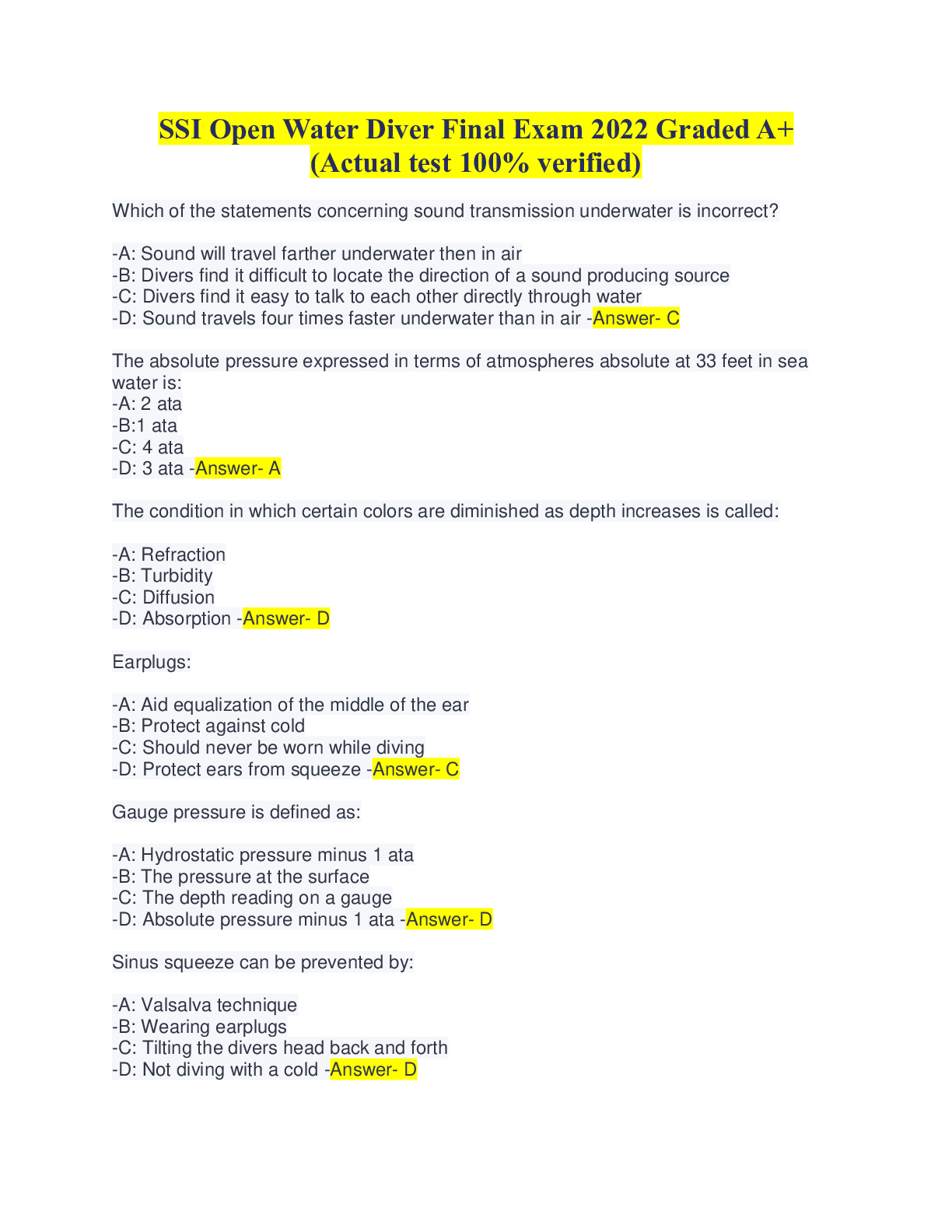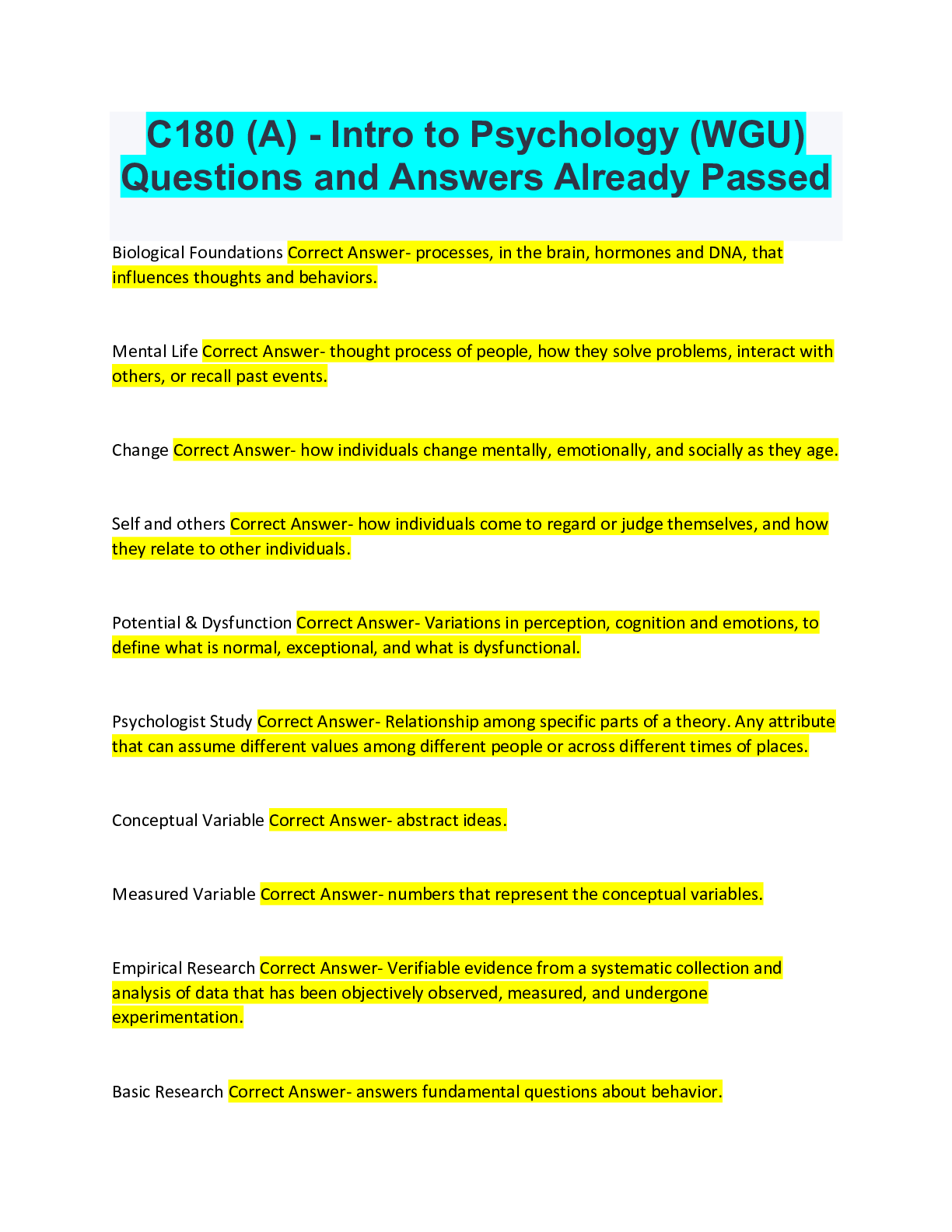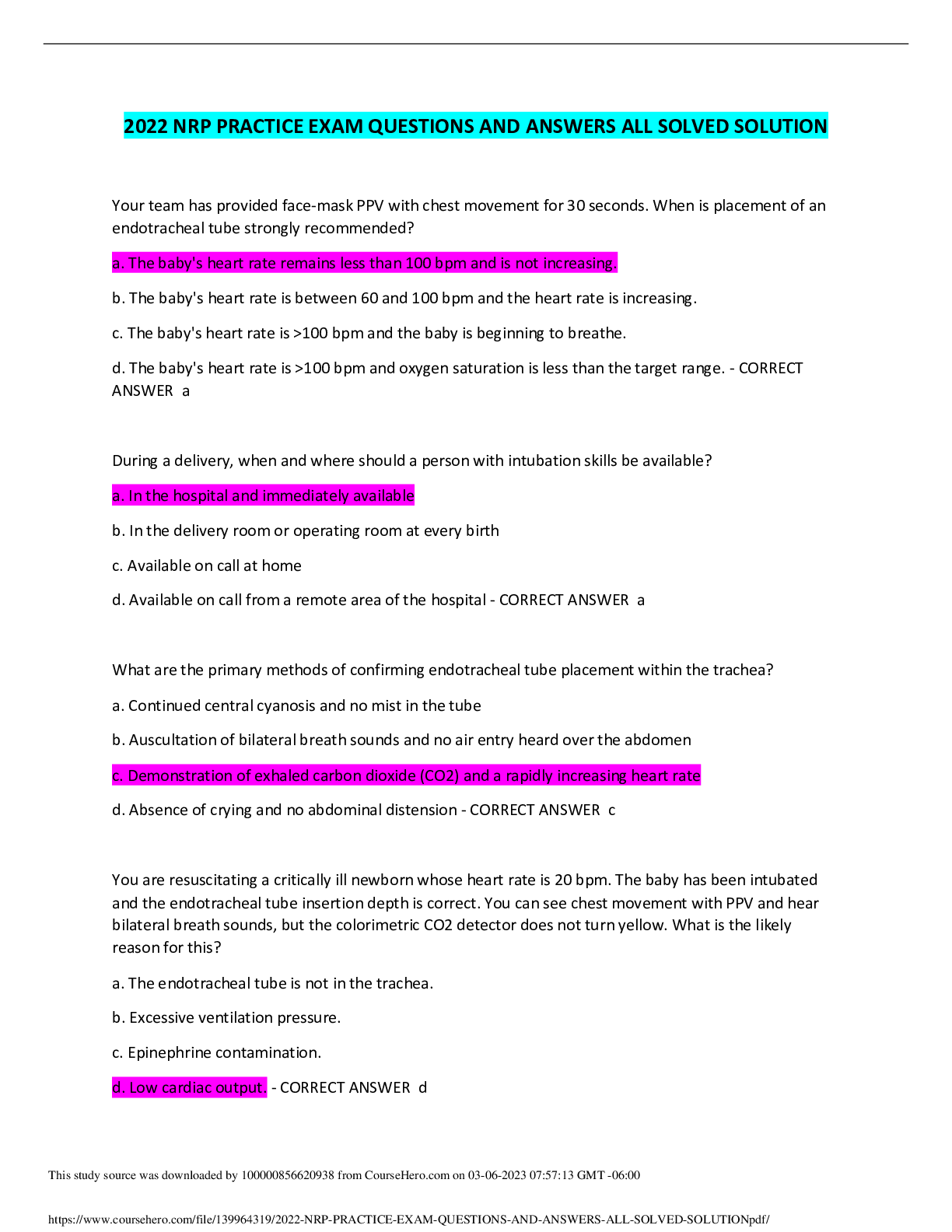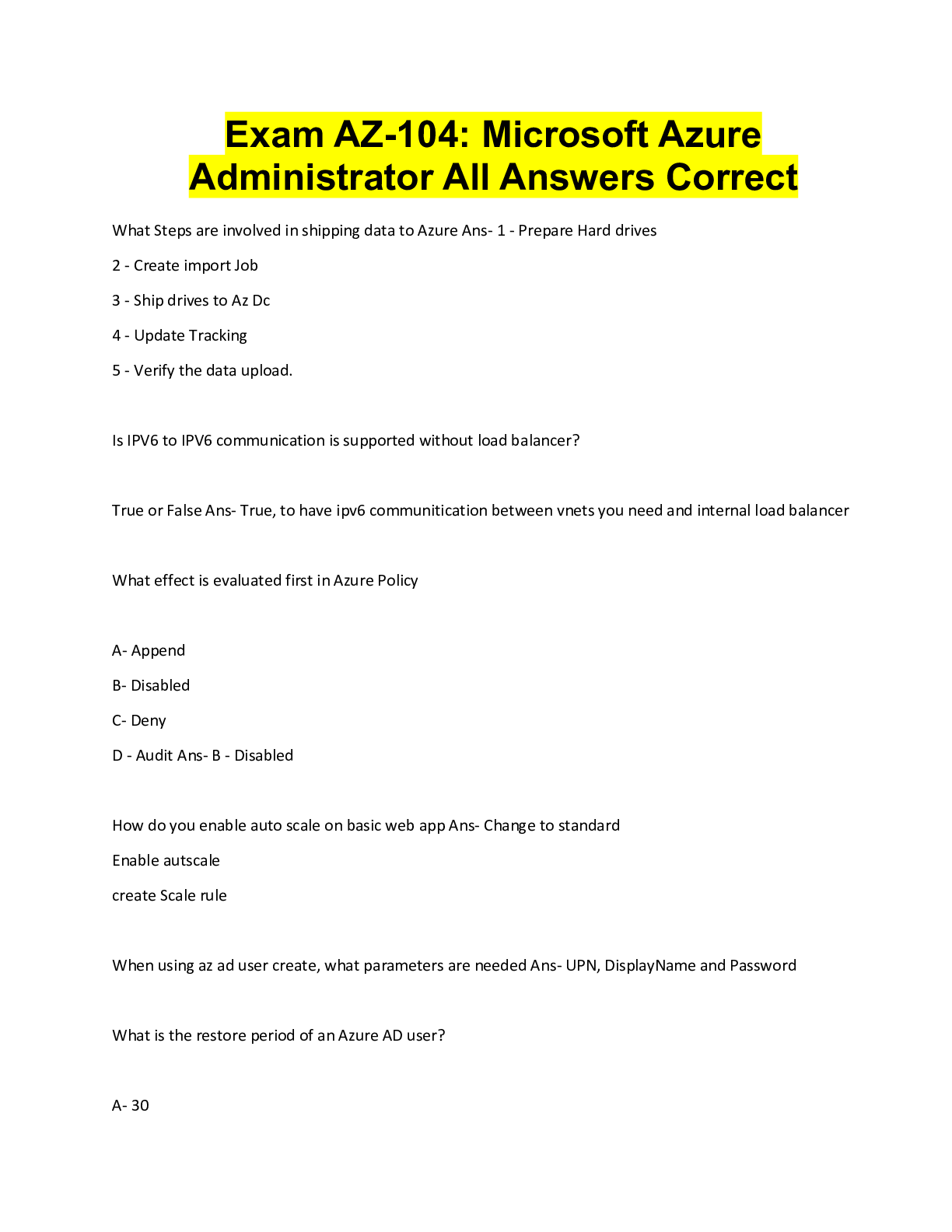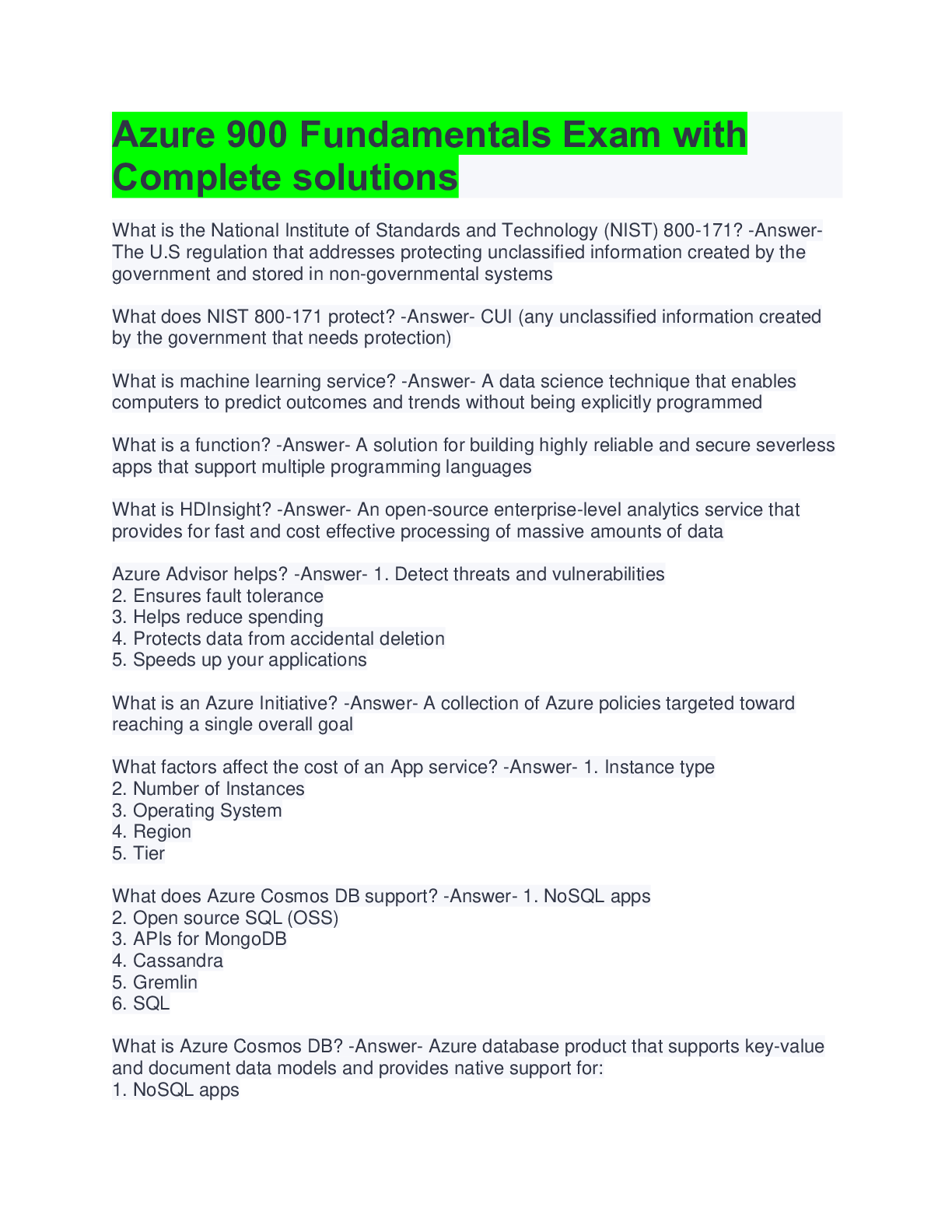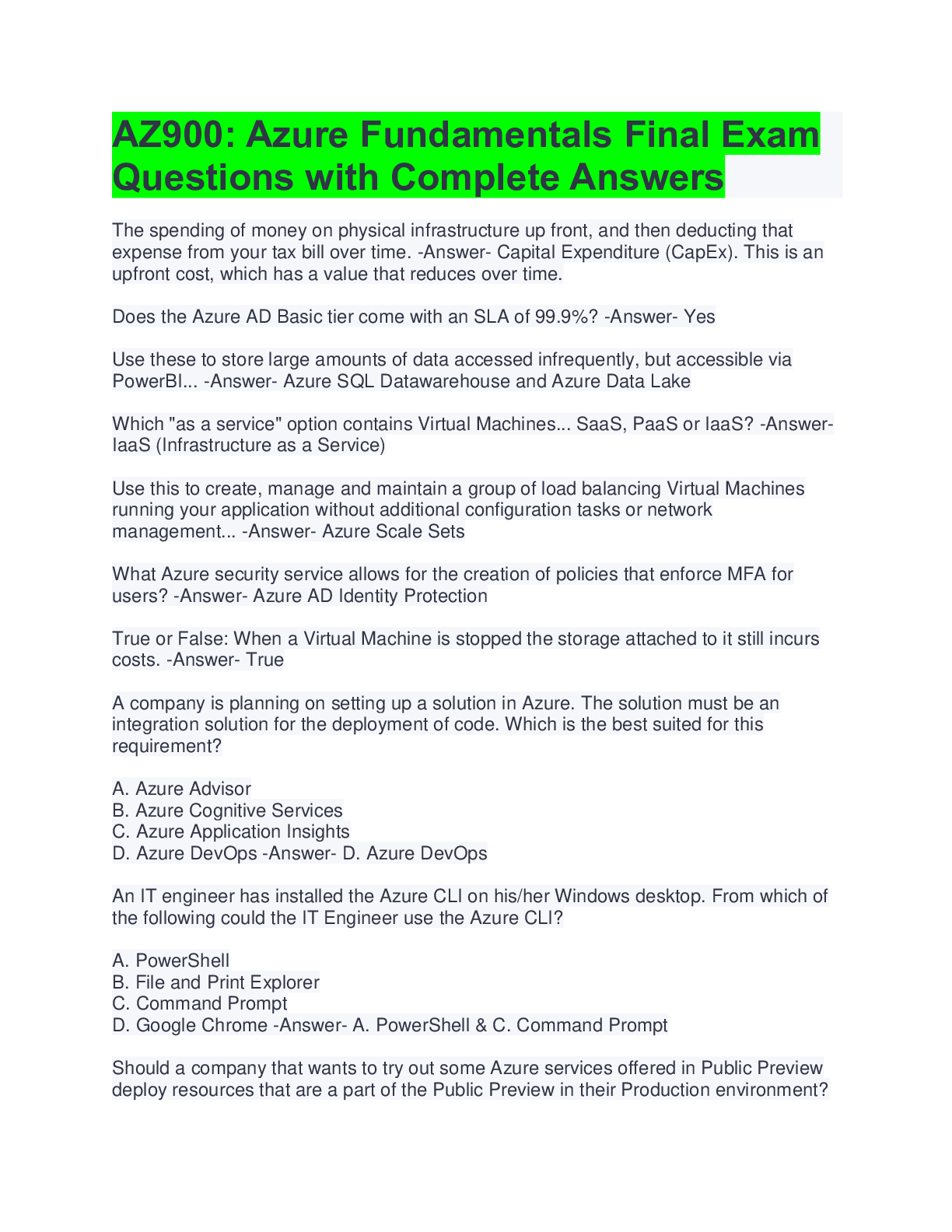Finance > QUESTIONS & ANSWERS > Audit Multiple Choice Exam 2 Questions with Answers (All)
Audit Multiple Choice Exam 2 Questions with Answers
Document Content and Description Below
Audit Multiple Choice Exam 2 Questions with Answers An auditor uses the assessed level of control risk to: -Ans- determine the acceptable level of detection risk for financial statement assertions... Which of the following should an auditor do when control risk is assessed at the maximum level? -Ans- Document the assessment An auditor assesses control risk because it: -Ans- Affects the level of detection risk that the auditor may accept The existence of audit risk is recognized by the statement in the auditor's standard report that the: -Ans- Auditor obtains reasonable assurance about whether the financial statements are free of material misstatement Which of the following is a definition of control risk? -Ans- The risk that a material misstatement will not be prevented or detected on a timely basis by the client's internal controls Regardless of the assessed level of control risk, an auditor would perform some: -Ans- Substantive tests to restrict detection risk for significant transaction classes Which of the following risks may be assessed in nonquantitative terms? -Ans- Control, detection, inherent- yes, yes, yes Which of the following is true? -Ans- If the assessed level of fraud risk is high, the auditor should attempt to reduce detection risk Inherent risk and control risk differ from detection risk in that they: -Ans- Exist independently of the financial statement audit In an engagement to examine management's discussion and analysis (MD&A) which of the following best defines control risk? -Ans- The risk that material misstatements in the MD&A presentation will not be prevented in a timely manner The acceptable level of detection risk is inversely related to the: -Ans- Assurance provided by substantive tests Which of the following is true about the term "factual misstatement"? -Ans- It refers to misstatements about which there is no doubt The existence of audit risk is recognized by the statement in the auditor's standard report that the auditor: -Ans- Obtains reasonable assurance about whether the financial statements are free of material misstatement The ultimate purpose of assessing control risk is to contribute to the auditor's evaluation of the: -Ans- Risk that material misstatements exist in the financial statements Control risk should be assessed in terms of: -Ans- Financial statement assertions The ultimate purpose of assessing control risk is to contribute to the auditor's evaluation of the risk that: -Ans- Material misstatements may exist in the financial statements Which of the following is an important consideration when deciding the nature of tests to use in a financial statement audit? -Ans- The procedure to be applied on a particular engagement are a matter of the auditor's professional judgement In a financial statement audit of a non-issuer, an auditor would consider a judgmental misstatement to be a misstatement that: -Ans- Involves an estimate In an audit of financial statements for which an auditor's assessment of risk is judgmental and may not be sufficiently precise to identify all risks of material misstatement, the auditor should take which of the following actions? -Ans- Perform substantive procedures for all relevant assertions related to each material class of transactions The ultimate purpose of assessing control risk is to contribute to the auditor's evaluation of the risk that: -Ans- Material misstatements may exist in the financial statements Inherent risk and control risk differ from detection risk in which of the following ways? -Ans- Inherent risk and control risk exist independently of the audit Which of the following best describes a type of judgmental misstatement? -Ans- Differences between management and the auditor's judgment regarding estimates Detection risk differs from both control risk and inherent risk in that detection risk: -Ans- Can be changed at the auditor's discretion In a financial statement audit, inherent risk is evaluated to help an auditor assess which of the following? -Ans- The susceptibility of a financial statement assertion to a material misstatement assuming there are no related controls. In assessing control risk, an auditor ordinarily selects from a variety of techniques, including: -Ans- Reperformance and observation [Show More]
Last updated: 2 years ago
Preview 1 out of 28 pages

Buy this document to get the full access instantly
Instant Download Access after purchase
Buy NowInstant download
We Accept:

Reviews( 0 )
$11.00
Can't find what you want? Try our AI powered Search
Document information
Connected school, study & course
About the document
Uploaded On
Aug 19, 2022
Number of pages
28
Written in
Additional information
This document has been written for:
Uploaded
Aug 19, 2022
Downloads
0
Views
209

